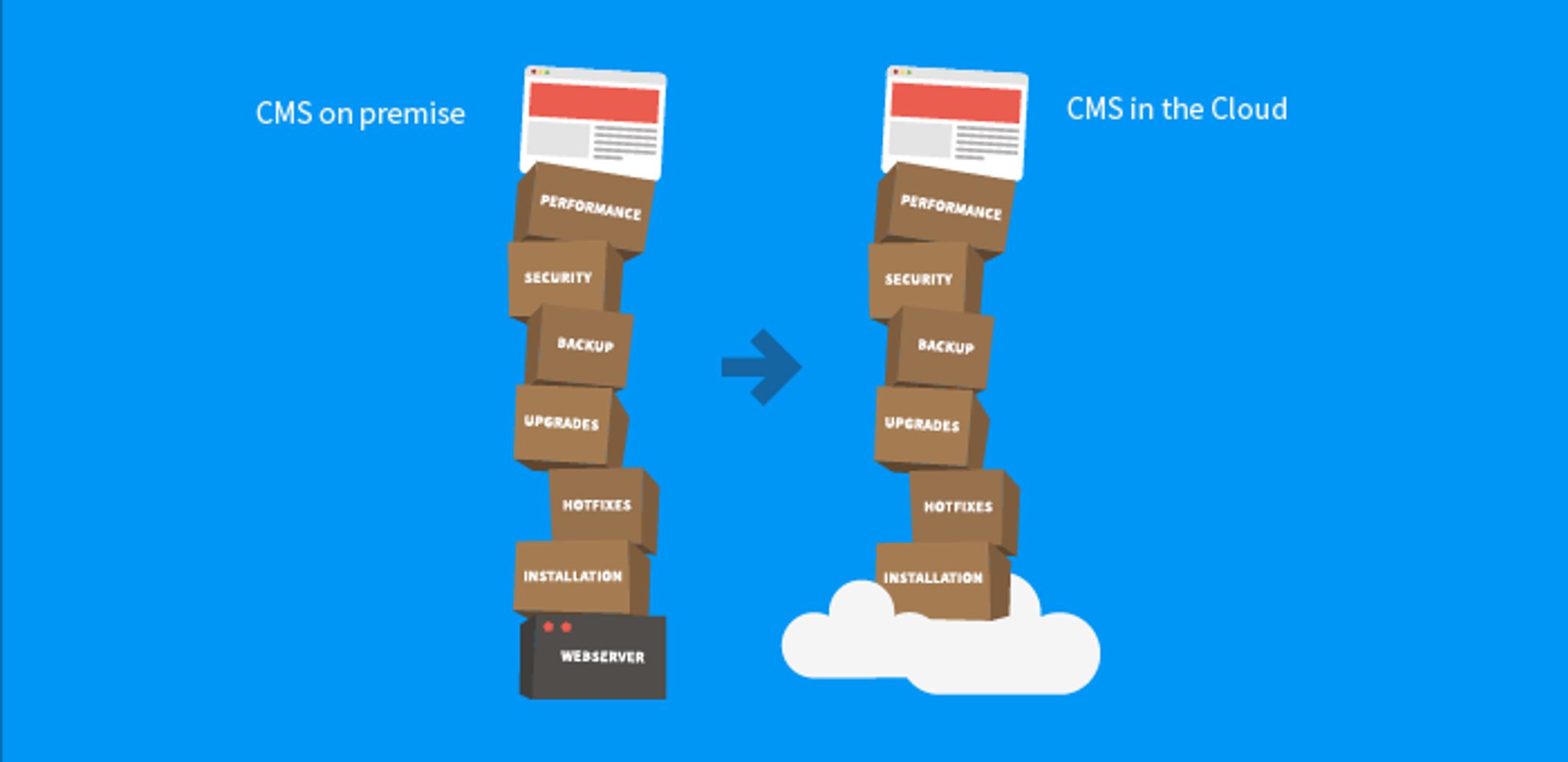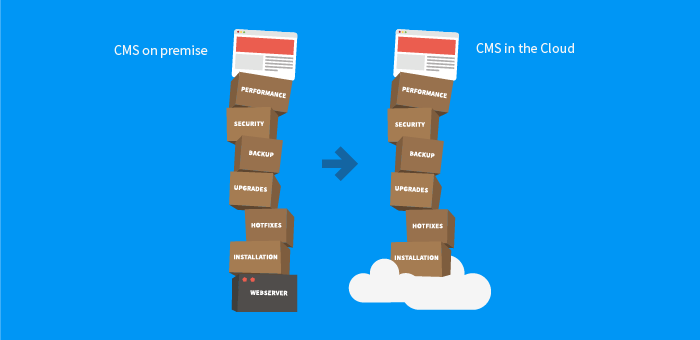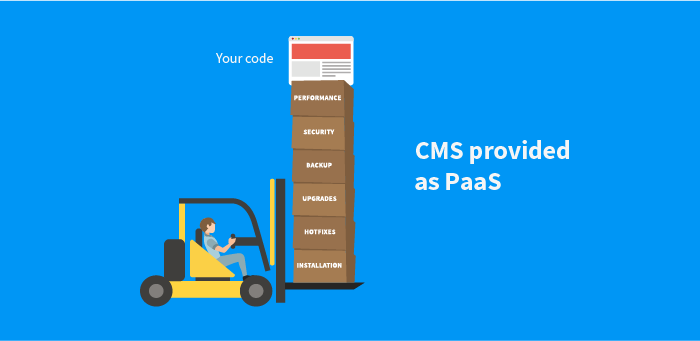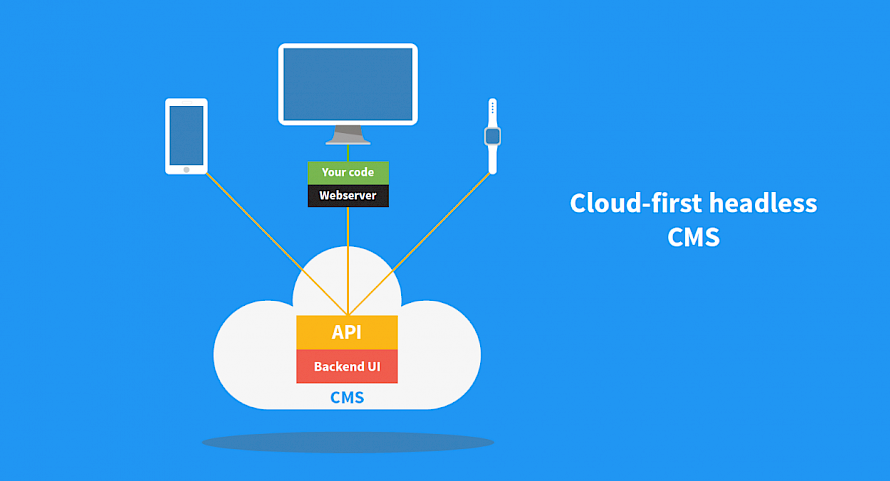Cloud-first CMS Is Not Just a CMS in the Cloud

Content Management Systems have seen some huge changes recently to allow for advancements in technology. The development and continued improvements of various devices like smartphones, smartwatches, Internet of Things devices, virtual reality, augmented reality, and any other content displaying devices mean that the need for on-demand content is growing at a phenomenal rate. How do you do it?
Content Management Systems
A typical CMS allows you to create and store content, be it text, image, video, or more, and display that content on a website, even with limited web programming knowledge. These CMSs were built for on-premise deployment and work fantastically. But, the need for higher scalability and agility has led people to start looking at deploying their CMS to the cloud. It is not unusual for many CMS platform providers just to take their CMS and deploy it to cloud hosting services like Amazon Web Services or Microsoft Azure. In fact, back in 2011, Kentico was the first CMS certified for Microsoft Azure, while in 2013, we launched the first .NET-based digital experience platform provided as a cloud service. But we had to discontinue the service a year later. Why? Because our customers rightly expected that we would run and maintain everything, but we just couldn’t meet their needs.
Although Kentico CMS worked in the cloud, it wasn’t specifically designed to do so. It wasn’t a true cloud service. The problem was that we needed to manage each installation manually, which we just couldn’t do. We couldn’t facilitate thousands of customers because we just didn’t have enough people to do it. And even if we did, the customers expected a flexible and self-sufficient environment, which this was not. We aimed for Software as a Service (SaaS) but ended up just providing managed hosting.
Time to Rethink the Whole Service
It was clear that running Kentico CMS in the cloud just wasn’t going to work as we wanted. We had to figure out what the biggest obstacles were and how we could get past them. We realized that before you could ever start working on your website within a traditional CMS, whether on-premise or in the cloud, you had to…
- Configure a web server.
- Install the CMS.
- Take care of hotfixes, upgrades, backup, security, and performance.
It is a headache that people just don’t want.

Managed Hosting Is Not the Answer
In the search for answers to your CMS headaches, you might find many CMS vendors that will tell you they offer a CMS in the cloud and will take care of all the maintenance for you. Your first reaction is probably “Wow, they just take care of everything for us!” But is it going to give you the flexibility you need? More than likely, not. Whenever the code changes, you will normally have to ask the vendor to deploy the changes to your production environment.

Platform as a Service: Closer, but Not Close Enough
The next concept is to provide a CMS as Platform as a Service (PaaS). PaaS offerings, unlike managed hosting, provide a much better self-service option for configuration and deployment through highly automated environments. But this model comes with many limitations as a result of standardized configurations:
- Some plugins may not be available.
- Certain customization options don’t work.
- You have limited control over the hosting environment.
- You need to continue to test your website after upgrades and hotfixes to ensure it is working correctly.
It means that PaaS still misses the elegance and efficiency you would expect from a true cloud service.

What about the Software as a Service (SaaS) model?
So you have probably heard of “SaaS CMSs” such as Wix, Squarespace, or WordPress.com. The problem is that these website builders offer limited flexibility in design, and you won't be able to run any custom code. They really are a great choice for a template-based site for a simple mom-and-pop store, but will fall very short on delivering a custom-built website.
Cloud-first Headless CMS—the Answer You’ve All Been Searching For
Finally, a model combining the benefits of SaaS with the presentation-layer flexibility you’ve been dying for—a cloud-first CMS utilizing the headless architecture.
A “cloud-first CMS” is built from scratch with the cloud in mind. Run as a true multi-tenant SaaS CMS, all customers use the same version of the CMS while the vendor only needs to manage one uniform environment. This small detail makes all the difference in efficiency for both the vendor and the clients.
Add to that the headless architecture, which separates the concerns of the vendor (running the CMS) from those of the client (the development of websites and mobile apps that consume content) and you get the possibility of simply using an API to display the content anywhere you want.
 In the fast-paced, multi-channel world of today, the cloud-first headless CMS is the best option for creating websites and managing content for a multitude of devices and platforms. That's why we created Kentico Cloud, the cloud-first headless CMS for digital agencies and their clients. Try it for yourself to see why you should be thinking about cloud and the headless approach for your next project!
In the fast-paced, multi-channel world of today, the cloud-first headless CMS is the best option for creating websites and managing content for a multitude of devices and platforms. That's why we created Kentico Cloud, the cloud-first headless CMS for digital agencies and their clients. Try it for yourself to see why you should be thinking about cloud and the headless approach for your next project!